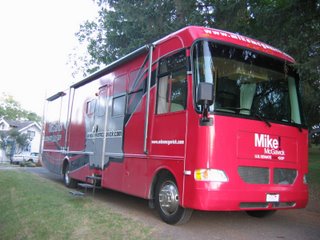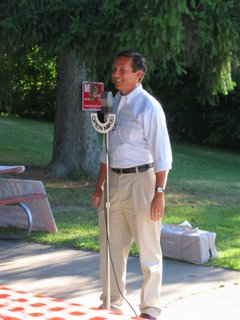Attention Justice League, Spokane City Council and all other anti-Wal-Mart do-gooders: The people in whose name you supposedly are carrying out your jihad don't want to be helped. They are smart enough enought to realize the unintended consequences of your social engineering.
From
last Tuesday's Chicago Tribune:More than a dozen church and community leaders ratcheted up the rhetoric Monday over a proposed city wage ordinance for big-box retail stores, saying the measure would hurt economically depressed areas.
The group, made up of leaders from predominantly African-American communities, said the measure would scare big retailers away from the city because it sets a higher minimum wage than the federal minimum.
"Why aren't we doing all we can to attract businesses?" said Dr. Leon Finney of the Metropolitan Apostolic Community Church. "Many of these jobs in retail are starter jobs.... I'm more interested in having a job than a living wage."
But supporters of the measure weren't buying their argument. They enlisted politicians and experts from other cities with similar ordinances who said their areas experienced little, if any, economic fallout.
The ordinance, expected to come up for a vote at a July 26 City Council meeting, has prompted Target officials to put their building plans on hold, further incensing critics of the measure. Wal-Mart official said last month that the plan, if passed, could alter the company's plans for building additional stores.
"Some say, 'Oh, they will build it, this is a lot of talk,'" Bishop Arthur Brazier said at the meeting, held inside the Apostolic Church of God on the South Side. "But experience tells me that is not the case."
"This is going to be very harmful to the city of Chicago," Brazier said, "to the African-American people who want jobs and Wal-Marts."At least a dozen people, representing ACORN, the Association of Community Organizations for Reform Now, and local labor unions in support of the measure passed out pamphlets to motorists outside the church.
"These big predatory monsters are not welcome here unless they come in and pay us a living wage," said Toni Foulkes, ACORN spokeswoman and member of Local 881 of the United Food and Commercial Workers International Union. "These companies are not only destroying Chicago ... but the U.S., the world."
The ordinance would apply to stores with at least 90,000 square feet and annual sales of $1 billion across all operations. A minimum wage of $9.25 an hour plus $1.50 an hour in benefits would take effect on July 1, with increases every year until 2010. A $10 wage and $3 benefit minimum would become effective then, after which annual cost-of-living increases would apply.
About 40 stores in Chicago, including outlets such as Target, Sears, Home Depot, Nordstrom's and Marshall Field's, would be affected.
Supporters of the proposal set up a telephone conference call Monday afternoon in which politicians and experts from across the country weighed in about their experiences with such ordinances.
David Coss, mayor of Santa Fe, said retailers and the Chamber of Commerce were concerned about the effect on businesses after the New Mexico city passed a living wage law three years ago.
"The Wal-Mart in Santa Fe has never skipped a beat," Coss said. "At least here in Santa Fe they have learned to live with the law after all."
Coss said the chamber predicted employers would flee the city for the surrounding area, "and that just hasn't happened."
In fact, Coss said, Wal-Mart has won permission to build its first super center in Santa Fe. The Santa Fe ordinance requires all businesses with 25 employees or more to pay workers at least $8.50 an hour. Under the ordinance, the wage rose this year to $9.50.
Chicago Ald. Freddrenna Lyle (6th) said the pattern and practice of the large retailers in other communities leads her to believe that their threats to not build stores "are disingenuous and disrespectful of the city and its residents."
Lyle said the city represents more than $1 billion of untapped buying power to the retailers. "Make no mistake, Wal-Mart and Target will open stores in Chicago, because the money is here," she said.
HT: John RuberryTechnorati Tags:
wal-mart walmart











